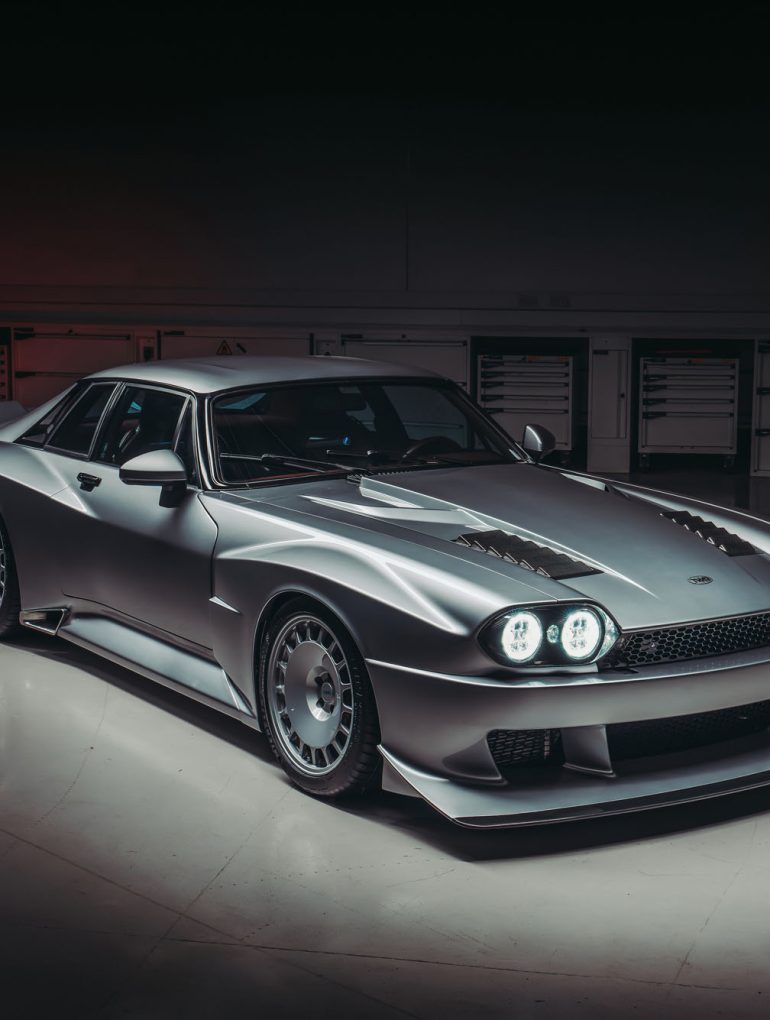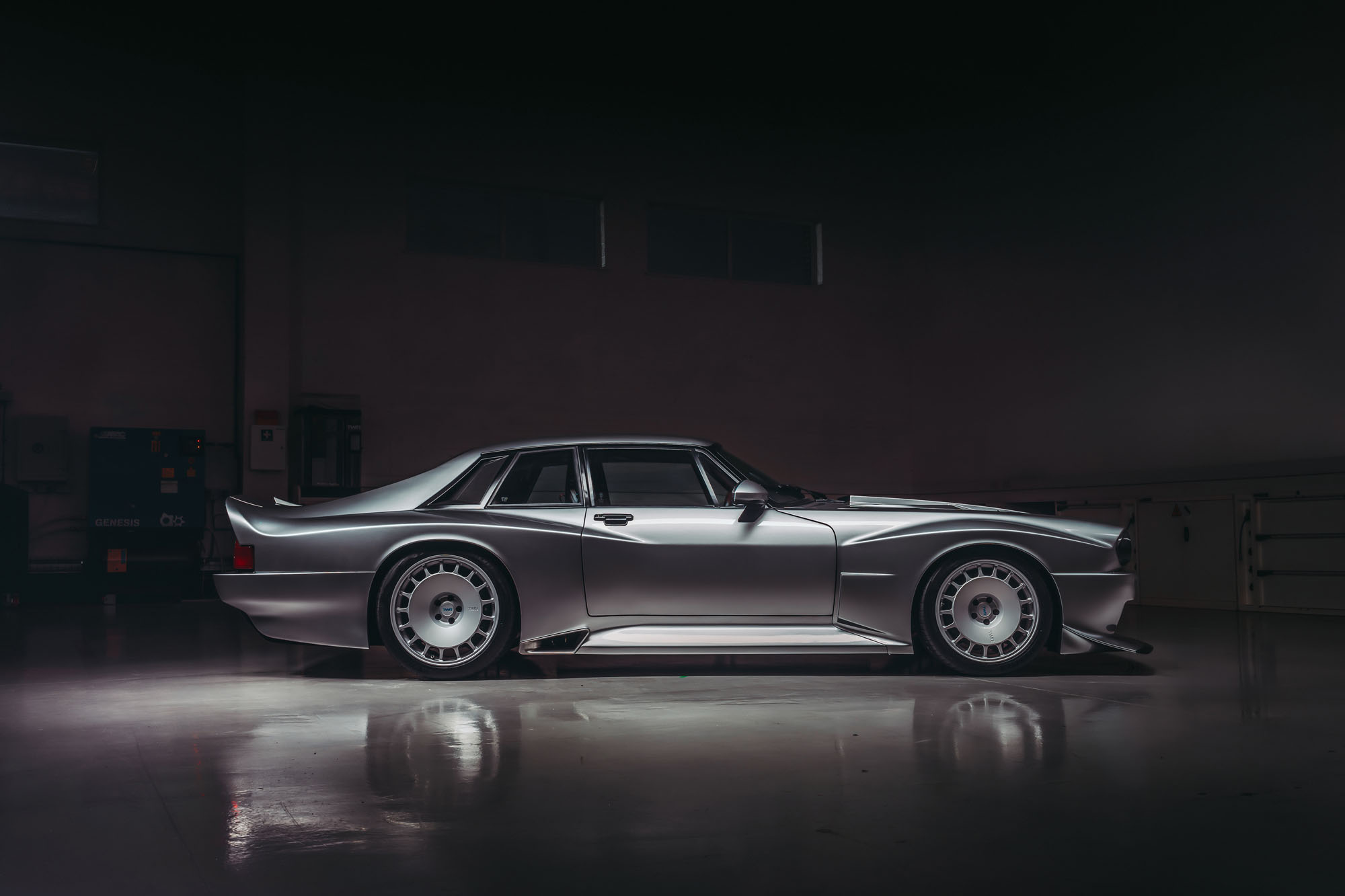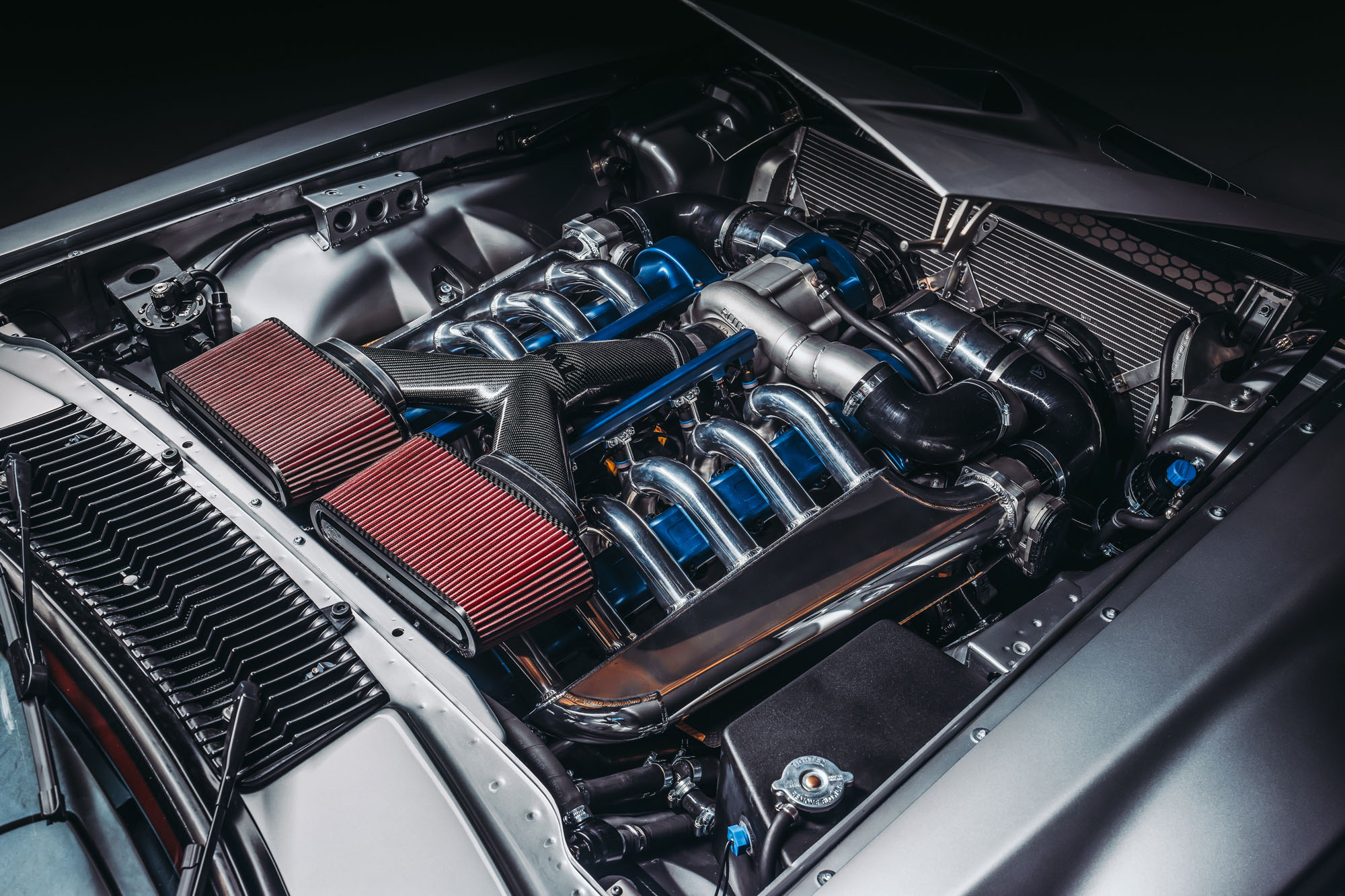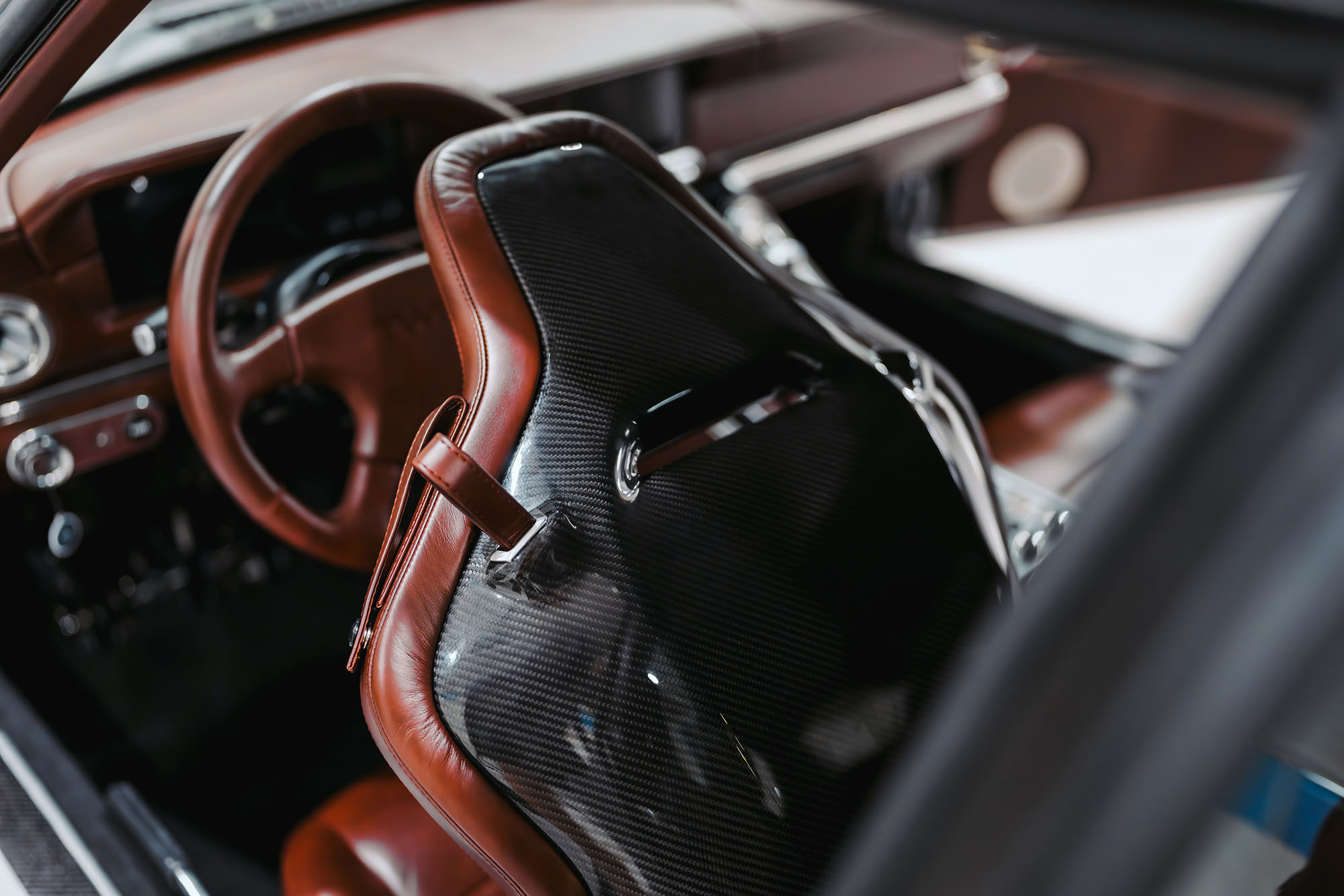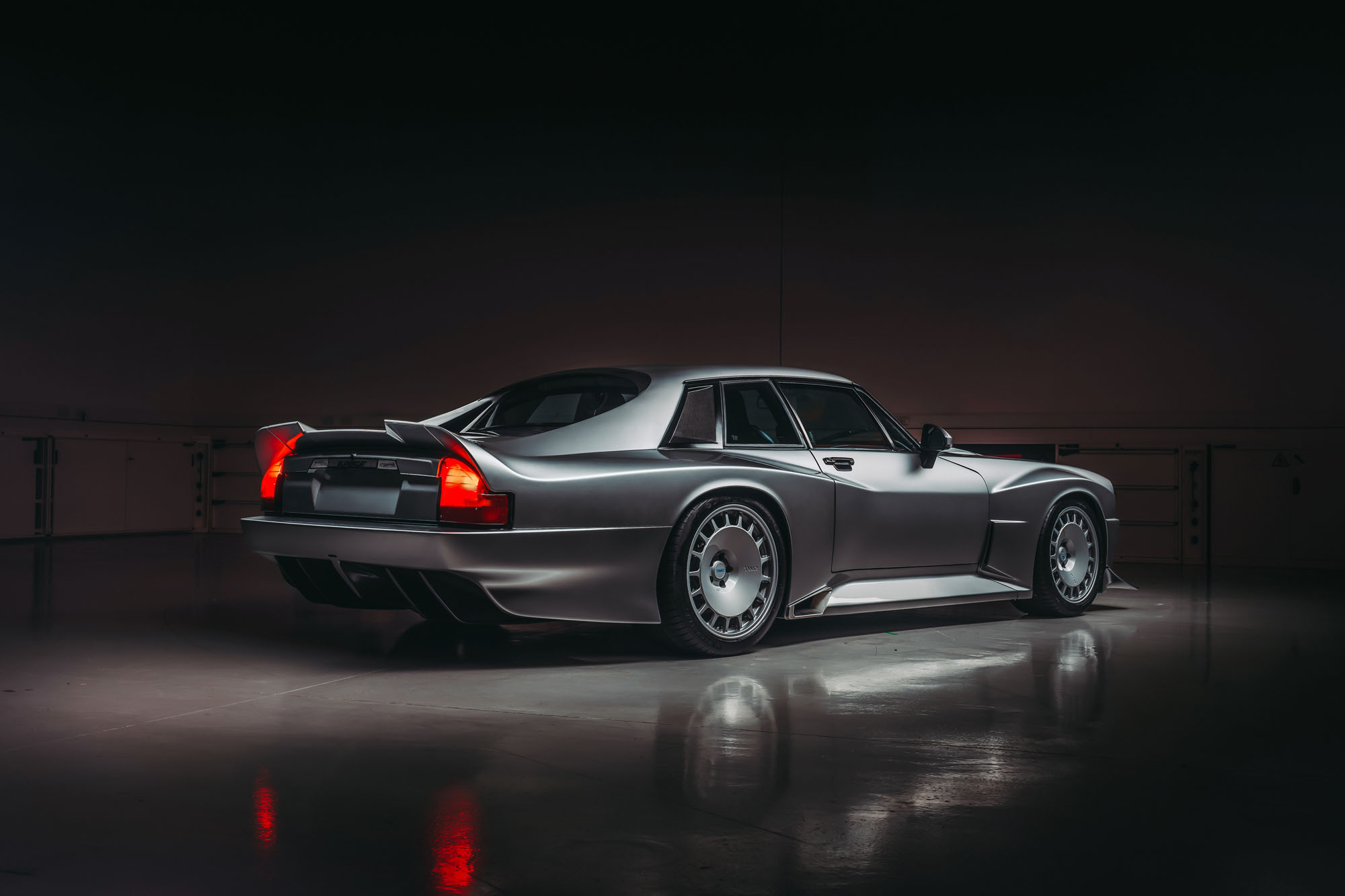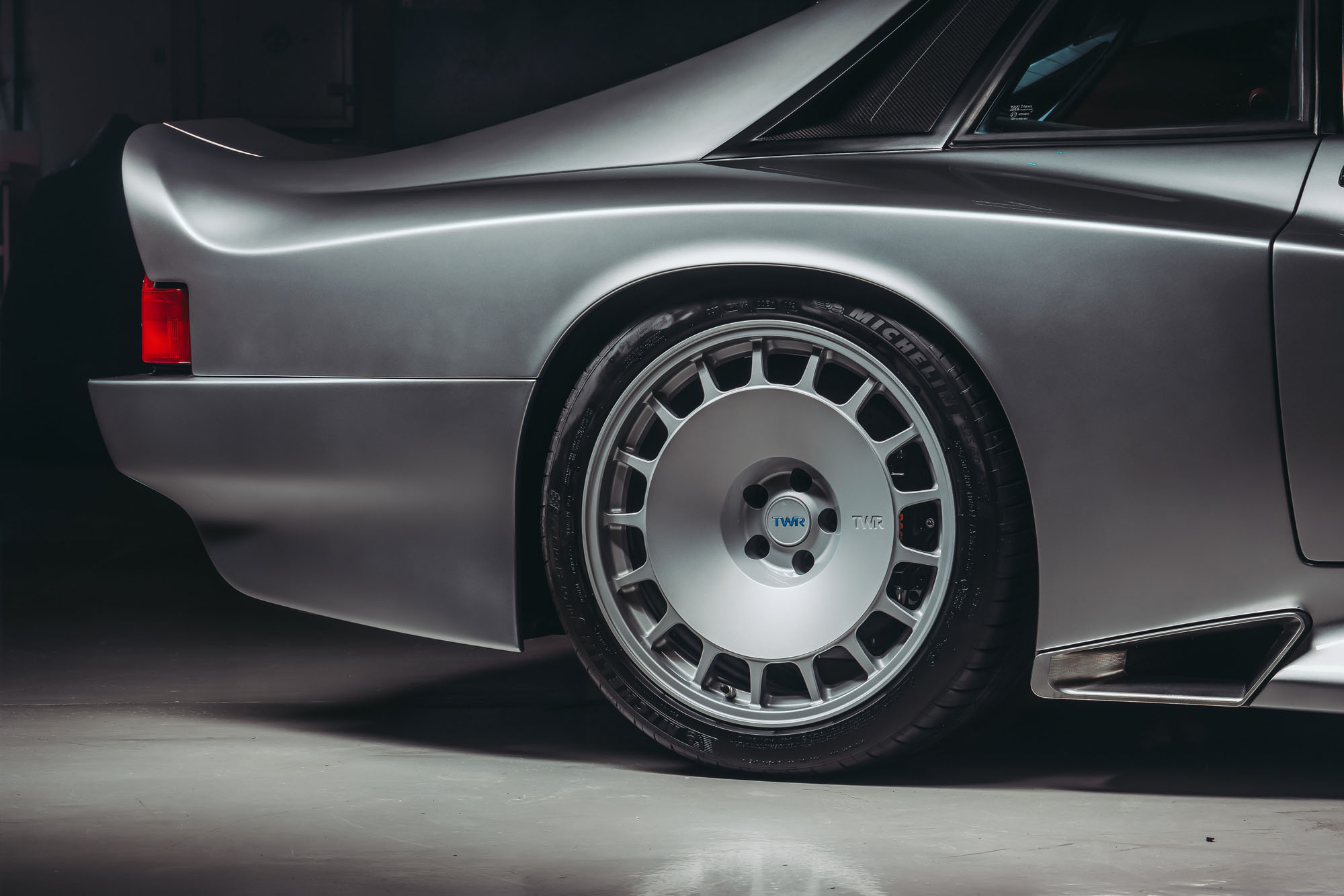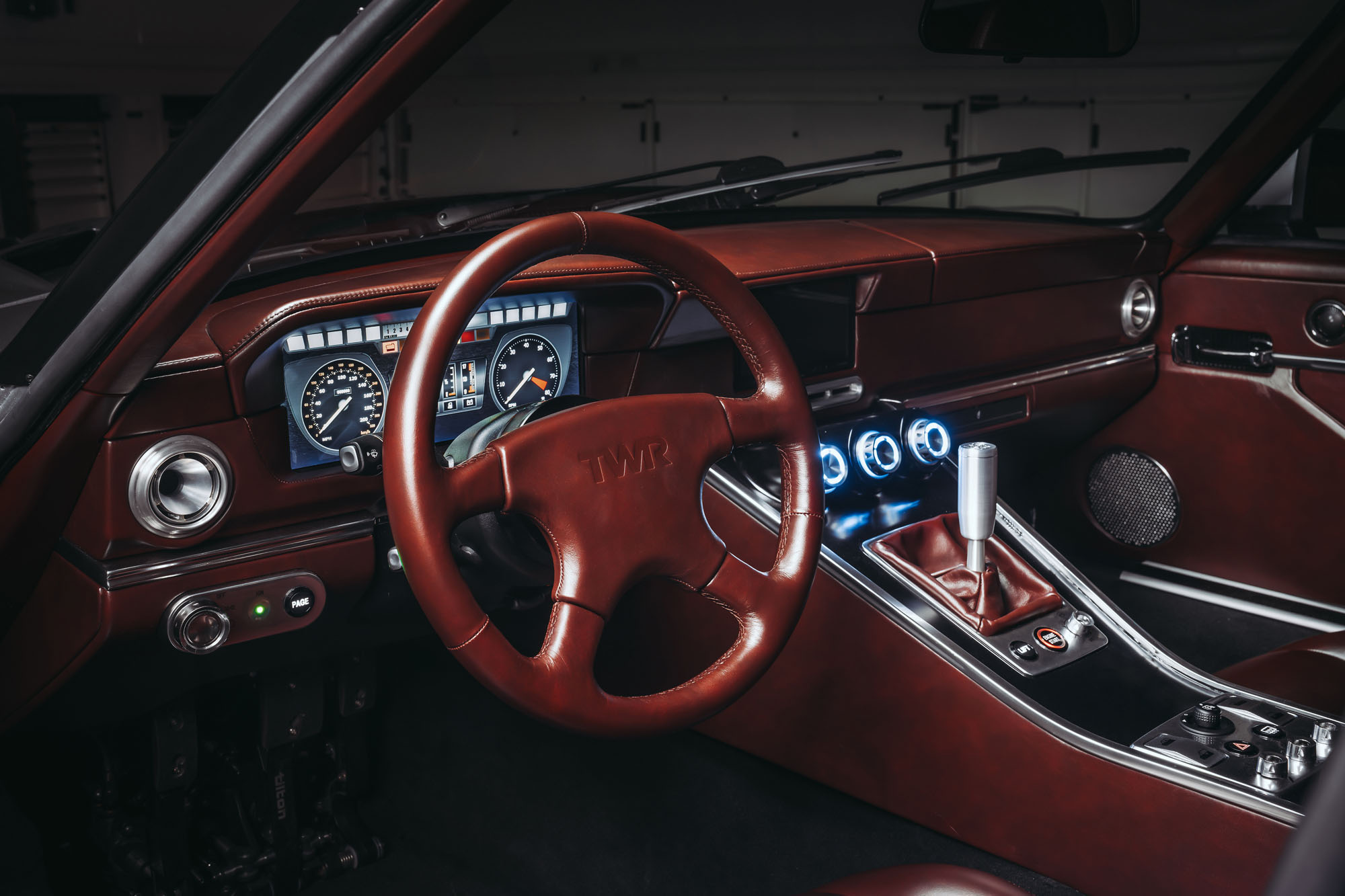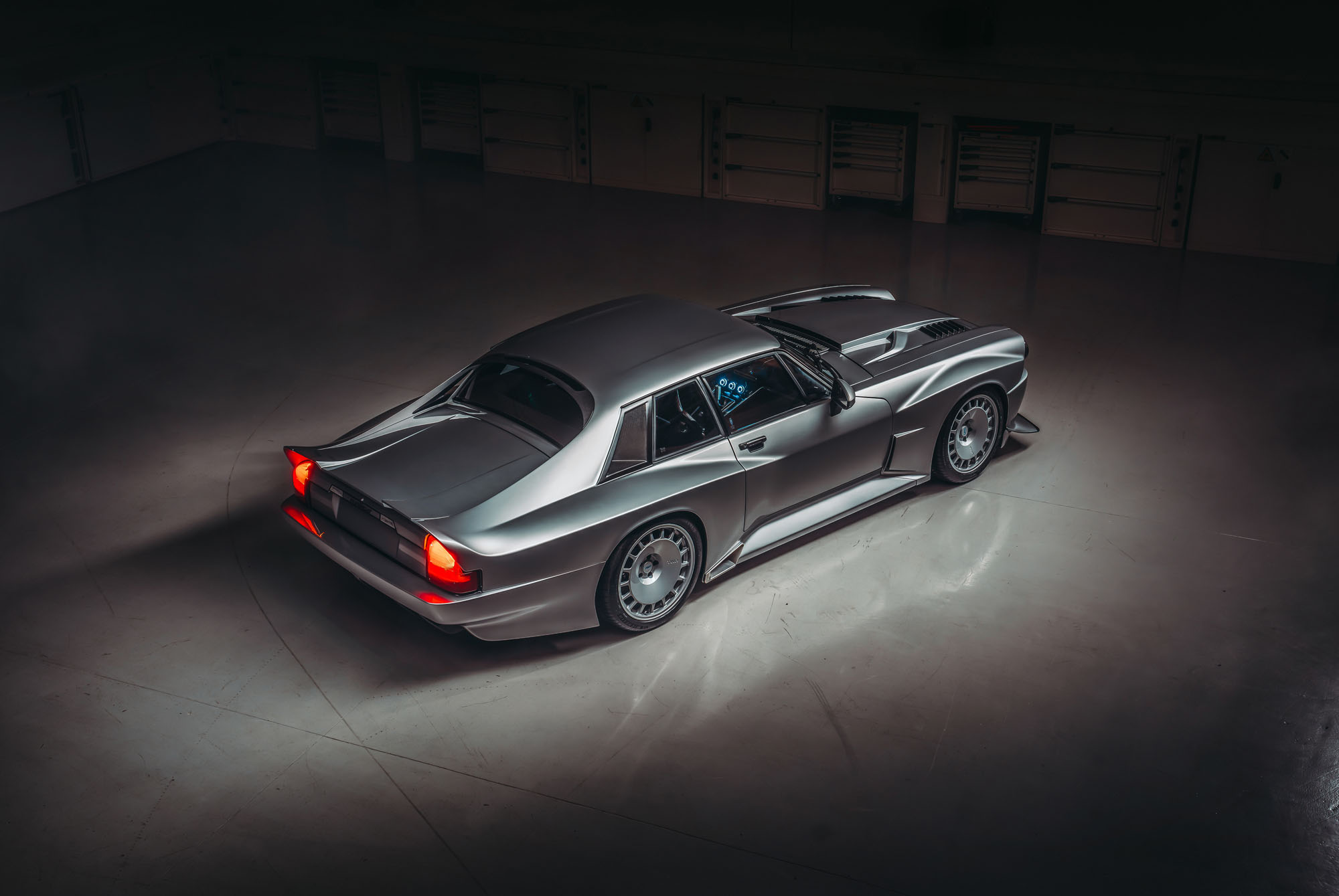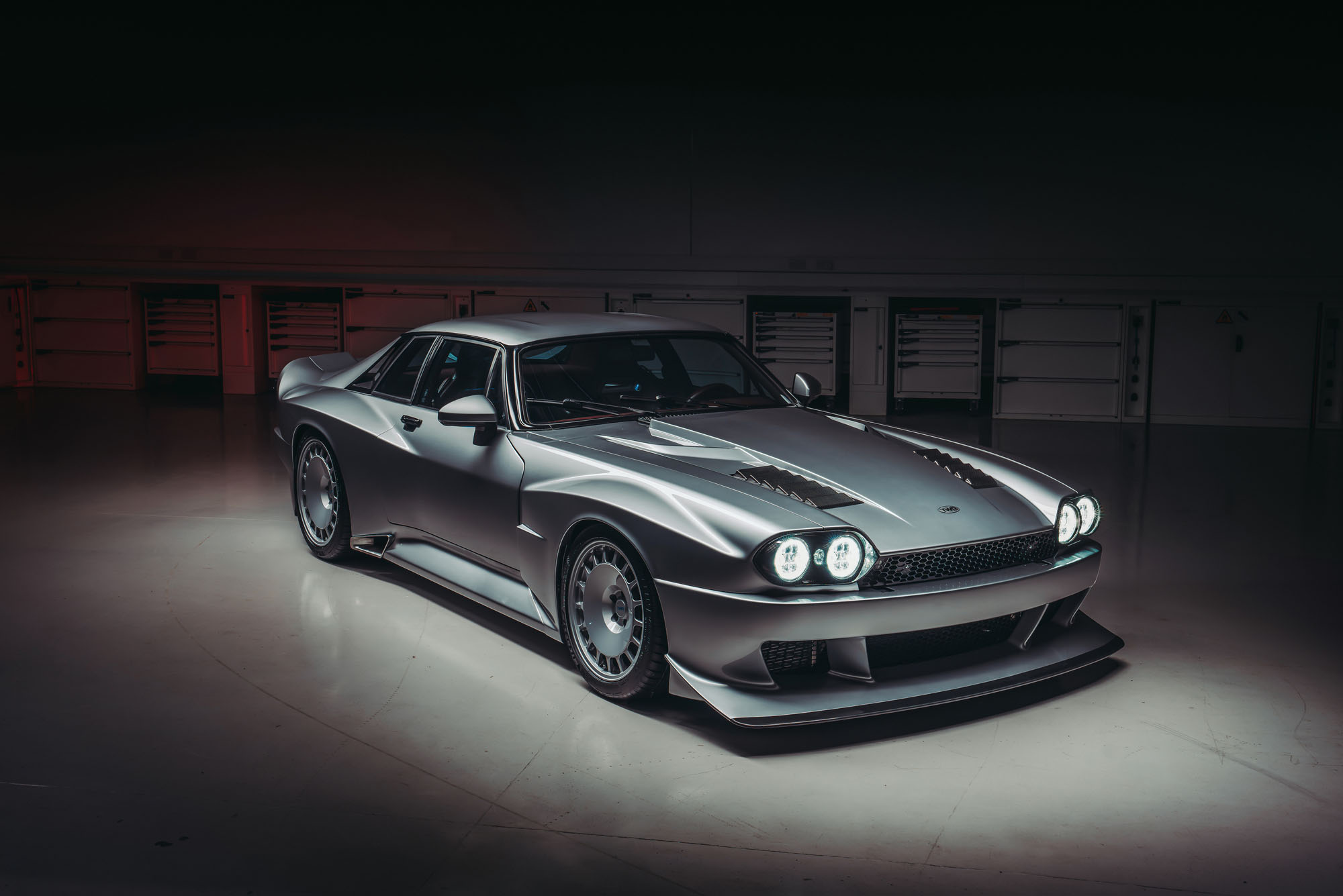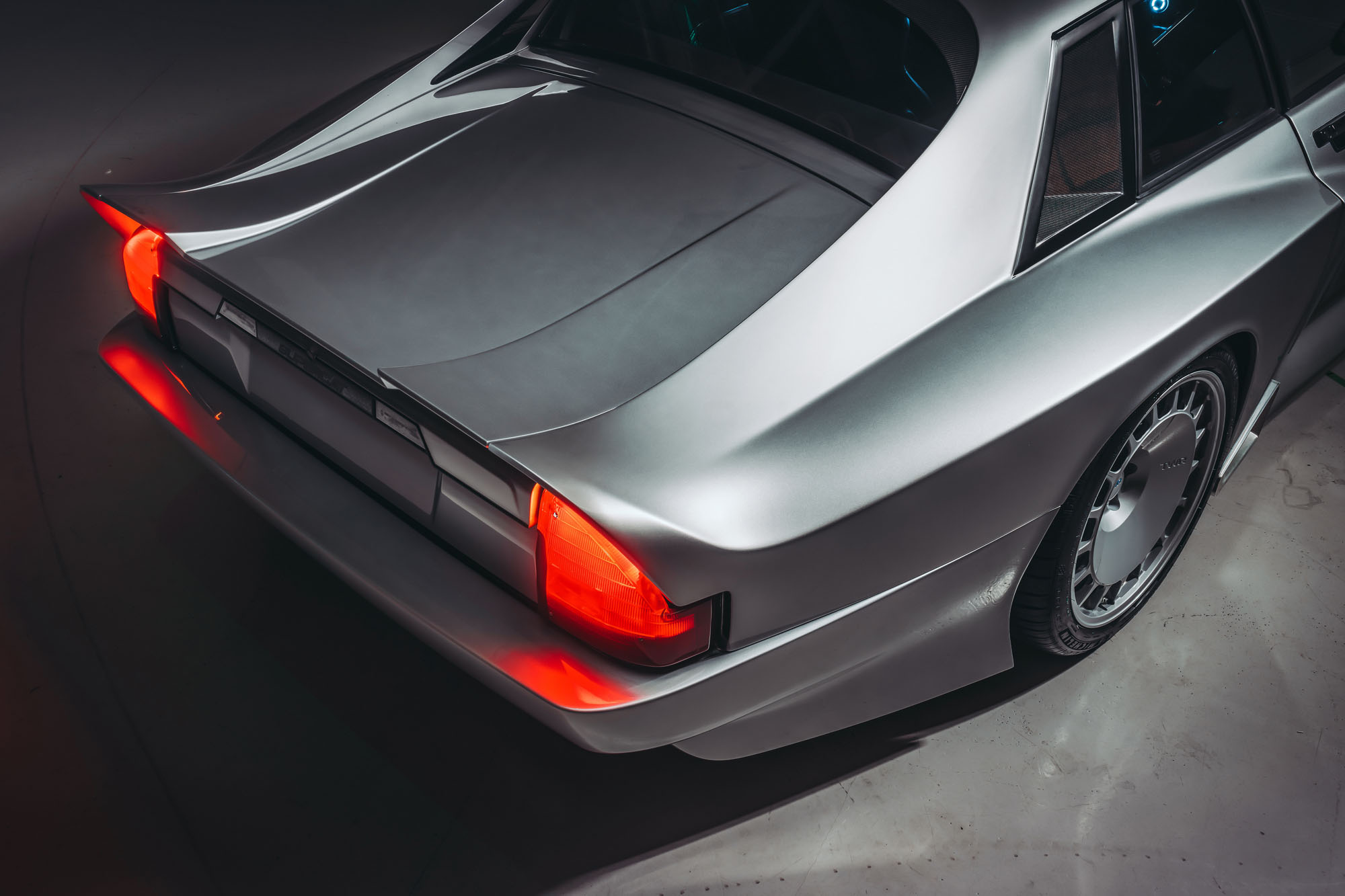TWR has formally unveiled the Supercat, its radical new Super-GT underpinned by the legendary Jaguar XJS. Widely previewed in the summer of 2024, the Supercat has already earned acclaim from clients and commentators ahead of its public launch today.
Fergus Walkinshaw, Director and Founder, TWR
“Almost 40 years after my father’s original company dominated the racetrack, we’ve brought the TWR name roaring back with our new Supercat. Our debut product, designed as an authentic, analog Super-GT for the committed driving enthusiast, has been developed for over three years by some of modern motorsport’s brightest talent. Built on the foundations of the classic Jaguar XJS, it uses modern materials and production methods, plus our in-house supercharged V12, to deliver a visceral, immersive driving experience on the road and the track. With production limited to just 88 examples and every car individually commissioned, it’s a chance to own something truly unique and personal, rooted in motorsport history but completely contemporary in its design, engineering and performance.”
The Supercat has been engineered by a team representing some of the most celebrated names in motorsport, including McLaren, Ferrari, Porsche, Williams, and Renault F1. The team is led by TWR director and co-founder Fergus Walkinshaw. His father, Tom Walkinshaw, the revered constructor and racer behind the original TWR, drove Jaguars to victory in the European Touring Car Championship, Spa 24 Hours, and Bathurst during the 1980s.
A True TWR Super-GT
The Jaguar XJS provides the essential foundation for the TWR Supercat, which also incorporates design elements inspired by other iconic racing Jaguars of the era, including the XJR-9, XJR-15, and the XJ220 supercar. True to its motorsport heritage, the Supercat features rear-wheel drive and a six-speed manual gearbox, delivering an authentic, engaging, and entirely analog driving experience. Beneath its long, sculpted, carbon-bodied bonnet lies a formidable supercharged V12 engine, developed in-house by TWR engineers. This power unit produces an impressive 660bhp and 730Nm of torque.
TWR’s philosophy emphasizes that exceptional driving cars are not solely defined by raw power. This is demonstrated through a suite of engineering enhancements ensuring the Supercat excels dynamically in the world’s most demanding motorsport and road environments. To manage the significant increase in power, the car’s structure has been reinforced with an integrated tubular steel framework, while lightweight carbon-fiber body panels contribute to a 9.3% reduction in weight compared to the original Jaguar XJS (1,605kg vs. 1,770kg).
Additional features include the option for carbon ceramic disc brakes, fully programmable traction control, launch control, and five distinct driving modes. These modes enable drivers to tailor the car’s dynamics to suit various road and track conditions. Double wishbone suspension, enhanced by an active dynamic damping system, ensures a composed and comfortable Super-GT driving experience on extended continental journeys. It also provides the precision, feedback, and stability required for dynamic road and track settings. This duality of character defines the Super-GT ethos, fulfilling the mission of creating a car capable of both high-speed touring and spirited track performance.
The Supercat excels at delivering on its mission. It is the perfect tool for driving to the Nürburgring, offering adjustable suspension and steering for a supreme GT driving experience on the journey there. Once on the track, the car adapts seamlessly to deliver exhilarating performance before returning occupants home in supreme comfort.
Practicality has not been overlooked. The rear seats have been replaced with a significantly expanded luggage area, ensuring ample space for long-distance touring — a hallmark of the Super-GT DNA. Interior comfort is elevated with a completely overhauled cabin that integrates modern features while paying homage to the classic Jaguar XJS design.
This includes a fully digital multimedia interface (MMI) with Apple CarPlay and Android Auto compatibility. Suspension and steering settings can be easily adjusted via an intuitive toggle interface. Carbon fiber-backed leather seats are available in a contemporary design or a ‘heritage’ option, referencing the original XJS seat louvers.
Radically Styled
Khyzyl Saleem, Designer, TWR Supercat: “I am proud to have designed a TWR true to its racing and performance DNA, building on the foundations of one of Britain’s great automotive icons. The TWR Supercat represents an entirely new expression of the original. As a designer, working with a new palette of highly technical materials has allowed me to re-energize the form and stance of the Jaguar XJS, boldly expressing our mission to create a true Super-GT. Collaborating with TWR’s exceptional engineers and aerodynamicists, we’ve created a car where every line and feature serves a performance purpose, authentically representing TWR’s legacy on both the track and the road.”
The TWR Supercat brings to life a vision for a modern, high-performance TWR car built upon the classic Jaguar XJS. Its striking silhouette has been designed by Khyzyl Saleem, one of the world’s leading digital and 3D car concept stylists, renowned for his performance-focused projects with iconic names such as the late Ken Block and Travis Pastrana.
Saleem’s design efforts were further bolstered by the involvement of Magnus Walker, the legendary British-born designer and car collector. Walker’s expertise in global car culture was instrumental in refining the vision of creating a vehicle that blends the Jaguar XJS’ foundational legacy with the bold, distinctive aesthetics and substance of a contemporary TWR car.
Their combined efforts lend the Supercat a more aggressively muscular character while preserving the Jaguar XJS’ iconic profile, including its signature silhouette, flying buttresses, and front-end graphic. Subtle design cues pay homage to TWR’s decades-long relationship with the Jaguar marque.
In keeping with TWR’s guiding philosophy, the Supercat’s design is driven by engineering requirements to achieve exceptional performance. Saleem’s design proposals were rigorously evaluated for aerodynamic efficiency by a former World Championship-winning Mercedes-Benz F1 aerodynamicist. This collaboration ensures the Supercat delivers a visceral and engaging driving experience, fulfilling the original design brief.
The resulting design not only communicates the Super-GT’s dynamic intent but also incorporates a suite of aerodynamically functional features to generate critical downforce. These include precision-designed splitters and in-body aero enhancements that provide the stability demanded in both high-speed touring and track settings.
Key aerodynamic innovations include a complete reimagining of the XJS’ iconic flying buttresses, now reshaped to optimize airflow from the body to the rear haunches. The floorplan has been flattened and paired with a bespoke, fully re-engineered rear splitter to generate additional downforce necessary to manage the Supercat’s extraordinary power output. To accommodate these changes, the exhaust system has been repositioned from the rear to the side of the car.
The Supercat’s broader stance further reinforces its dynamic character. Its width has increased from 1,793mm to 1,975mm compared to the original XJS, enhancing its visual and aerodynamic profile. This wider footprint is complemented by TWR Forged Monoblok wheels, sized at 18 inches at the front and 19 inches at the rear — a significant evolution from the original XJS’ 15-inch alloys.
The First of a New Breed of TWRs
As the first TWR production car, the Supercat is the perfect exemplar of the company’s philosophy: blending modern engineering, materials, and methods with a classic base to create something that truly captures the spirit of TWR, which reshaped world motorsport in the 1980s and 1990s. Future TWR models will undergo the same rigorous development and testing process, adopting protocols and facilities used by the world’s leading sports car brands, racing teams, and other performance specialists. The same philosophy is applied to the manufacturing of every TWR product, with every car hand-built at the company’s facility in Newbury, Berkshire, at TWR’s dedicated factory.
The Magic Number
TWR is now accepting commissions for the Supercat, whose production run will be strictly confined to just 88 examples worldwide, in homage to Tom Walkinshaw’s famous win with the XJR-9 at Le Mans in 1988. The first customer deliveries are expected in the summer of 2025. Every Supercat is built to order, and customers have a wide range of personalization options. Orders have already been taken across the United States, the UK, Europe, Asia, and the Middle East in both right-hand-drive and left-hand-drive configurations. Prices will vary according to individual specifications but start at £225,000, excluding local taxes. A limited number of build slots remain open, with a £35,000 deposit.
| Component | Subcomponent | TWR Supercat |
| Chassis | Steel Monocoque + Steel and Carbon Fibre Reinforcement | |
| Subframe | Front | TWR Design, Tubular T45 Steel |
| Rear | TWR Design, Tubular T45 Steel | |
| Suspension | Front | TWR Design, Double Wishbone with Active Dynamics |
| Rear | TWR Design, MultiLink with Active Dynamics | |
| Wheels | Front | 18″ TWR Design Forged Monoblok |
| Rear | 19″ TWR Design Forged Monoblok | |
| Tyres | Front | 275 / 35 ZR18 |
| Rear | 325 / 30 ZR19 | |
| Brakes | Front | Vented Steel, 6-pot Caliper, Carbon Ceramic Option |
| Rear | Vented Steel, 4-pot Caliper, Carbon Ceramic Option | |
| ABS | 12 Level Programmable ABS | |
| Engine | Displacement | 5.6 litre |
| Induction | Supercharged | |
| Fuel Injection | Fuel Injected | |
| Bore & Stroke | 92mm x 70mm | |
| Drivetrain | Gearbox | 6 speed manual |
| Propshaft | Aluminium | |
| Differential | Plated Limited Slip | |
| Bodywork | Carbon Fibre | |
| Technical Data | BHP | 660bhp @ 7,600 rpm (max rpm 7,750rpm) |
| Torque (Nm) | 730Nm @ 5,350 rpm | |
| Weight | 1,605 kg | |
| Dimensions | Length (mm) | 4766 |
| Width (mm) | 1975 | |
| Height (mm) | 1210 | |
| Track Width (mm) | Front 1,604mm / Rear 1,604mm | |
| Wheelbase (mm) | 2591 | |
| Seats | 2x Fully Electric | |
| Additional | Traction Control | 5 Level Programmable |
| Launch Control | Yes | |
| Drive Modes | 5 Independent | |
| Tyre Pressure Monitoring | Yes |


